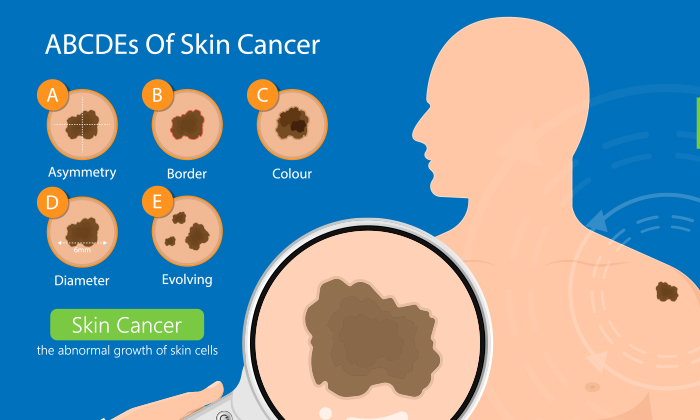Nearest Location to you:
People typically have between 10 and 40 moles on their skin but may have more if their skin has a light complexion. The medical name for moles is melanocytic nevus, and they are typically less than half an inch in diameter.
Moles come in a variety of colors, including black, brown, tan, red, a combination of red and brown, or flesh-colored. The moles on your body may be perfectly flat or raised.
Your body develops moles when a group of melanocytes grow together to form them. Melanocytes are responsible for producing the pigmentation of your skin. They can appear anywhere on the body but are most common in the following place
However, we caution you not to assume that every flat or raised mark displaying one more color mentioned above is a mole. Several other types of skin lesions can initially look like a mole. These include:
No matter how many moles you have or their location on your body, frequent sun exposure can increase their size and number. Since moles can become cancerous, it is important to protect yourself from the ultraviolet rays of the sun when you are outdoors. Wear sunscreen, lightweight clothing, sunglasses, and a wide-brimmed hat and try to avoid direct exposure between 10:00 a.m. and 4:00 p.m. The sun’s ultraviolet rays are most intense during these hours and can cause sunburn or other damage to your skin.
However, we caution you not to assume that every flat or raised mark displaying one more color mentioned above is a mole. Several other types of skin lesions can initially look like a mole. These include:
No matter how many moles you have or their location on your body, frequent sun exposure can increase their size and number. Since moles can become cancerous, it is important to protect yourself from the ultraviolet rays of the sun when you are outdoors. Wear sunscreen, lightweight clothing, sunglasses, and a wide-brimmed hat and try to avoid direct exposure between 10:00 a.m. and 4:00 p.m. The sun’s ultraviolet rays are most intense during these hours and can cause sunburn or other damage to your skin.

Many people have all the moles that will ever develop on their skin by the time they are a year old. However, others continue to develop new moles into their 20s and 30s. It is uncommon for new moles to develop after age 35. If you notice the growth of new moles or marked differences in an existing mole, be sure to schedule an appointment with Anne Arundel Dermatology as soon as possible. We will confirm or rule out the possibility of skin cancer and treat your moles accordingly.
The three types of moles that grow on the human body can be regular and symmetrical, irregular, or cancerous. You will notice one or more of the following when a mole is cancerous:
Dermatologists refer to this method of checking your moles at home as ABCDE. Although a cancerous mole sounds scary, the good news is that it is highly treatable in the early stages. Performing regular skin checks at home and requesting an appointment anytime you notice something unusual is the best way to stay ahead of skin cancer. You can learn more about skin cancer at this link or contact our dermatology practice with additional questions.
Moles: 3 Basic Types, Causes, Symptoms & Removal (medicinenet.com)
To request an appointment, call 443.351.3376 or submit the form below.

Spending time in the sun can bring out freckles and spots you didn’t even know you had. Thus, it can be challenging to determine which spots are normal or if they need to be examined by a medical professional. It is imperative that when something odd does appear, it gets diagnosed and treated correctly. Early detection of skin cancer is the key to minimal treatment and successful outcomes.

Spending time in the sun can bring out freckles and spots you didn’t even know you had. Thus, it can be challenging to determine which spots are normal or if they need to be examined by a medical professional. It is imperative that when something odd does appear, it gets diagnosed and treated correctly. Early detection of skin cancer is the key to minimal treatment and successful outcomes.
Click through to learn more about any area of care. If you have concerns, please give us a call to make an appointment to see your dermatologist.

































Anne Arundel Dermatology is a great place to work. We offer career advancement opportunities. We invite you to View All Current Openings.
